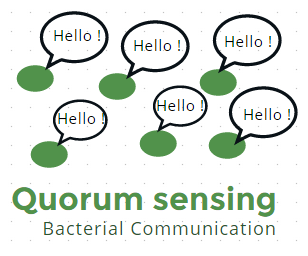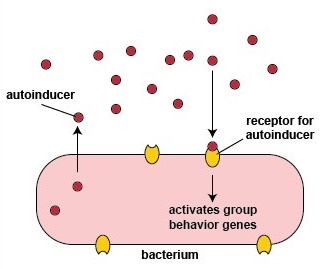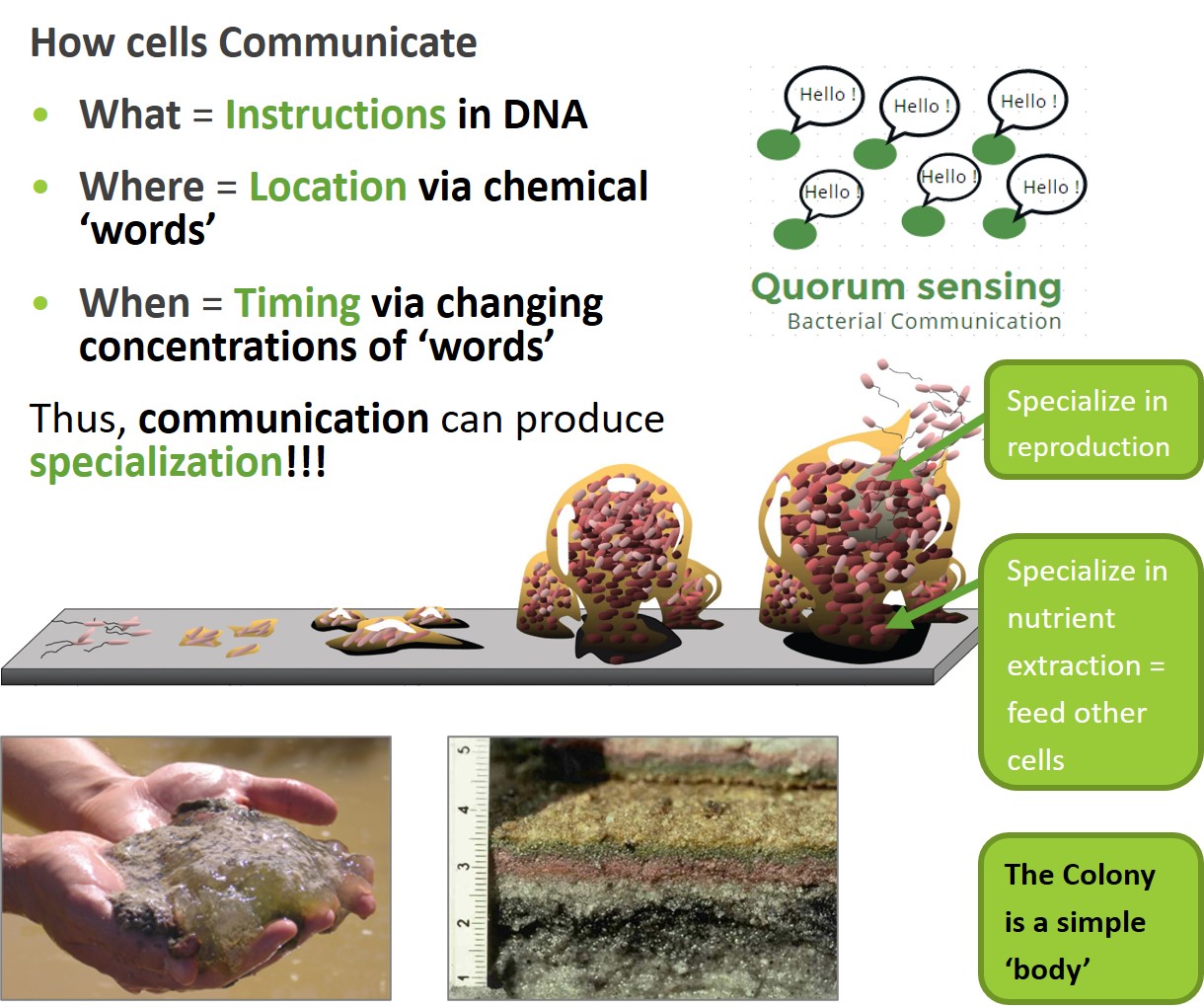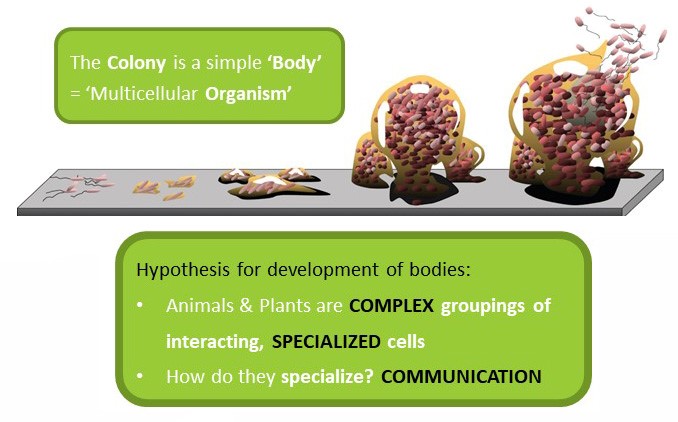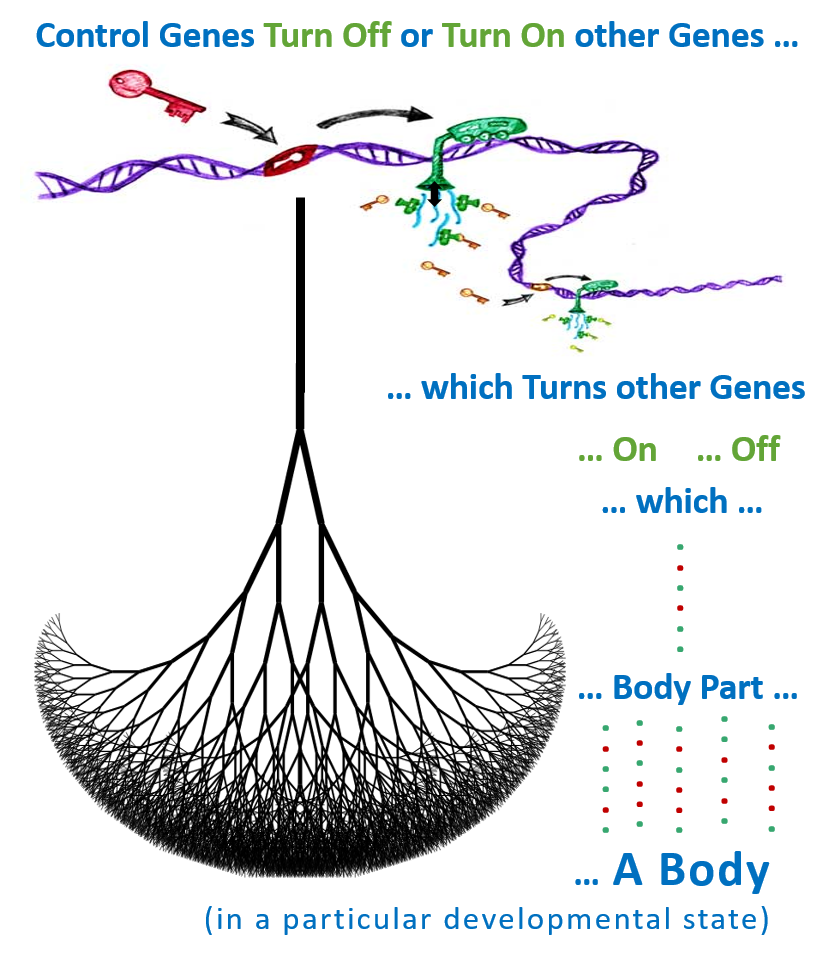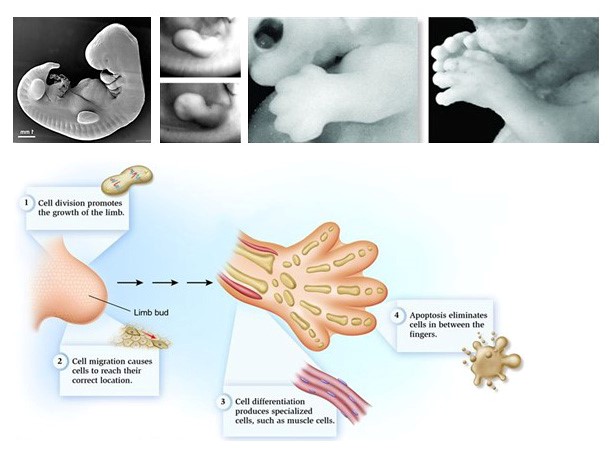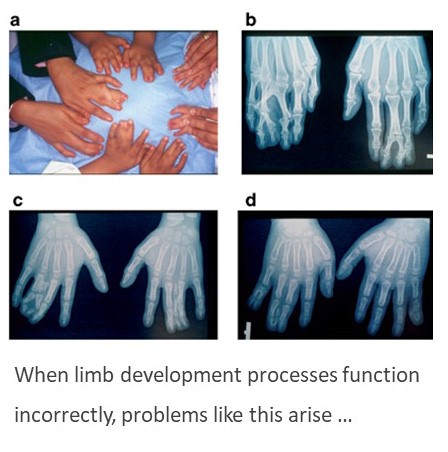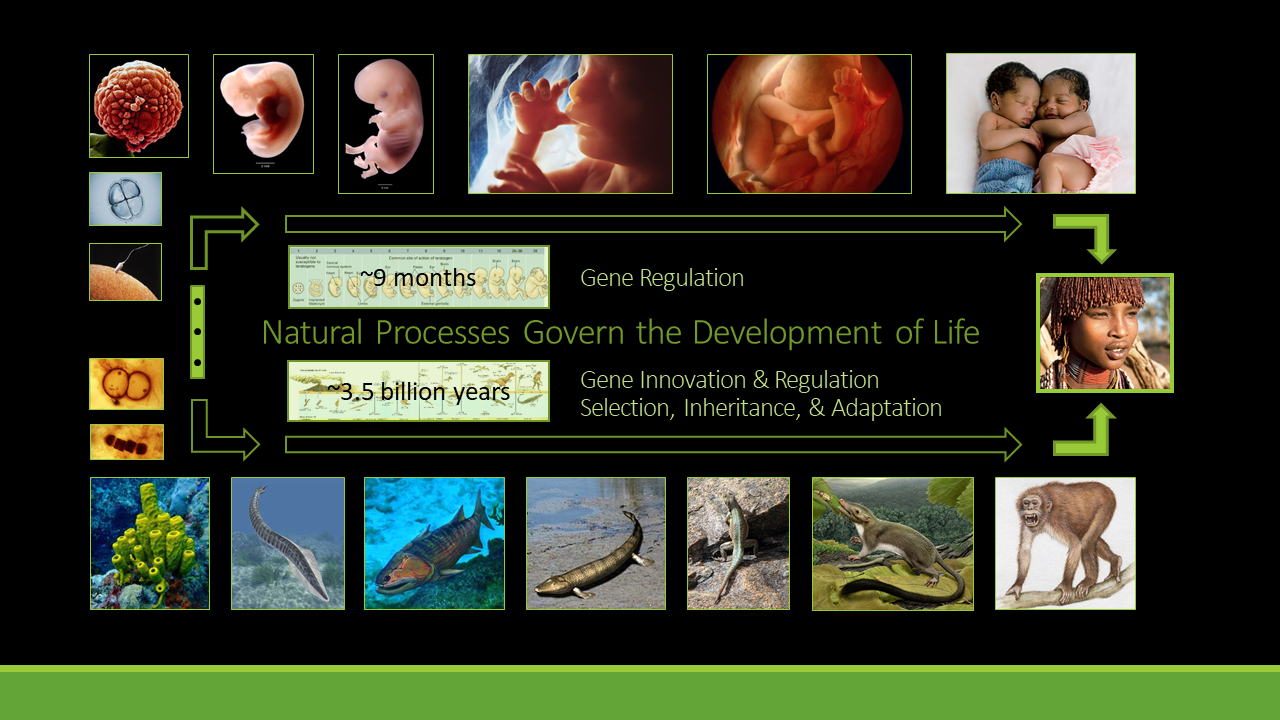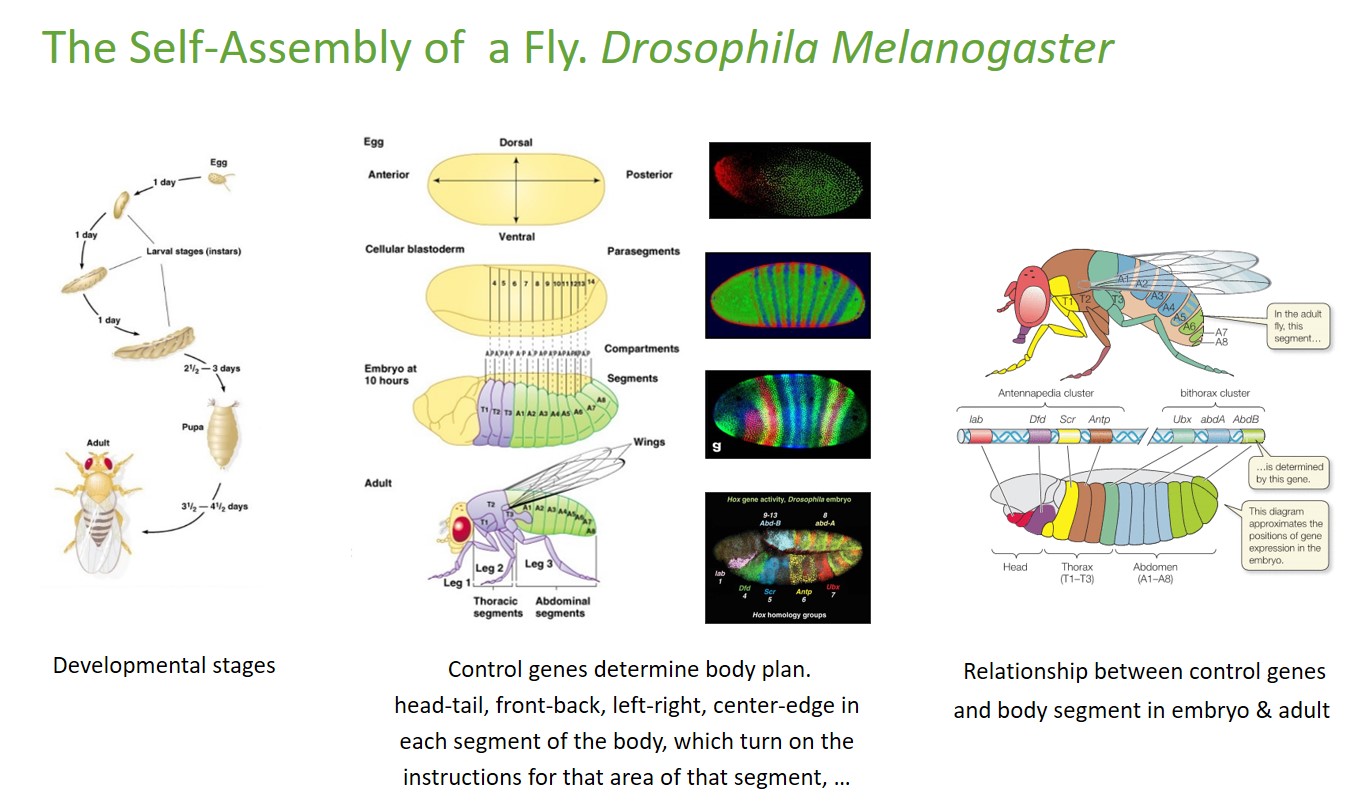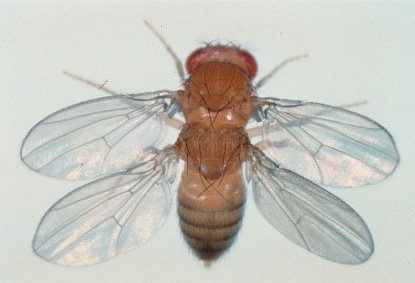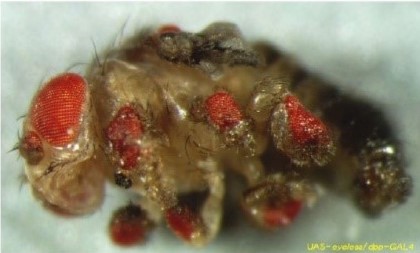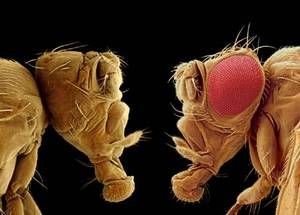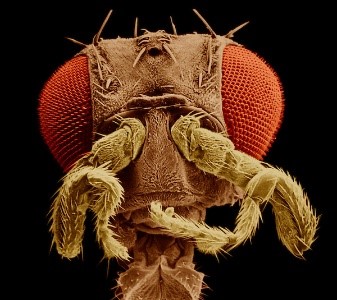
Explore 4.26 How Bodies Self-Assemble
Learning Objectives
By the time you have completed the 4.26. Introduction & Exploration Activities, you should be able to:
- Understand and be able to identify each of the following: stages/states (and transitions) of prenatal of human development -- pre-embryo, embryo, fetus; body axes, body segments, and birth.
- Briefly describe how each cell in a developing organism or body part knows what to do in each moment—which genes to turn on or accentuate and which to inhibit or turn off. Specifically understand how body geography forms and how cells know where, when, and how to develop a body part, such as a limb or eye.
- Understand how even small changes to the application of control genes (gene regulation) can cause significant changes in the characteristics of bodies. Also, describe how confident humanity should be that we understand the basic processes by which a single cell becomes a complex body.
Scientific Terms/Concepts
Terms: Stages/States of Prenatal of Human Development (and the transitions that separate them), Pre-Embryo (stage/state), Body Axes, Embryo (stage/state), Fetus (stage/state), Body Segments, Childbirth.
Define and give an example of each term:
Term:
Body Axes
Definition:
Example:
Term:
Body Segments
Definition:
Example:
Term:
Pre-Embryo (stage/state)
Definition:
Example:
Term:
Embryo (stage/state)
Definition:
Example:
Term:
Fetus (stage/state)
Definition:
Example:
Term:
Childbirth (stage/state)
Definition:
Example:
Smart Cells
Briefly describe how each cell in a developing organism or body part knows what to do—which genes to turn on, which to accentuate, which to inhibit, and which to turn off. For example, how is body geography (axes, segments, body parts) established and how do cells know where, when, and how to develop a body part such as a limb or eye.

| Stage | Ages | Defining Characteristics |
|---|---|---|
| Pre-embryo | < 3 weeks | Fertilization; Establishment of cell polarity and body axes; cell division and differentiation |
| Transition | ~ 3 weeks | Onset of cell differentiation and organ development |
| Embryo | ~3-8 weeks | Organ development |
| Transition | ~8-9 weeks | All major organs present |
| Fetus | ~ 9 wk to ~9 mo | Development of fully functioning organs |
| Transition (birth) | Birth - 0 years | Supposed to coincide with fully developed organs |
The picture below shows five organisms—a human, fish, reptile (turtle), amphibian (salamander), & bird. The embryos in each column show a single organism at two developmental stages: an early stage (top) and a later stage (bottom).
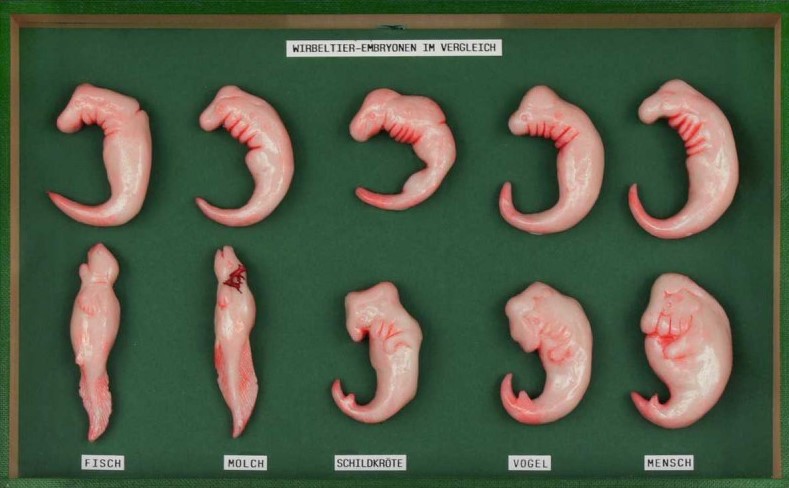
In the space below, identify the organisms by listing their names from left to right
What did you notice about all the embryos in the top row?
What did you notice about all the embryos in the bottom row?
The pictures below show snapshots of human prenatal development, from fertilized egg to infant.

Below, describe the changes you observe in the prenatal development of a human. You can include the two human embryos from the earlier image, if you’d like. (Those images would lie between the red-berry-looking thing (zygote) and the embryo that looks like an alien.
While not strictly true (because evolutionary changes have accumulated in the developmental processes along different lineages), the development of any one organism broadly tracks the development of life on Earth. Each begins as a single cell and then develops through various stages of multicellular organisms—stopping at the developmental stage represented by the organism. Only the most complex organisms go through all stages. For example, humans begin as a single cell and then transition through stages similar to simple multicellular organisms, animals with distinct heads and tails, fish, limbed animals, …, and then a fully formed infant.
Said another way, the embryonic development of each aspect of the human body is homologous to the development of ancestral animals such as eukaryotes, sea squirts, simple fish, lobe-finned fish, amphibians, reptiles, mammals, and primates. The migration of the eyes and formation and resorption of the tail are notable examples. Another interesting example involves the formation of male gonads: they form near the heart (as in fish), but they migrate through the chest cavity and abdominal muscle wall to a location between the legs. This developmental journey of human testes weakens the muscle wall and leaves human males susceptible to hernias.
Of course, the embryonic development of the components of all organism are also homologous to ancestral organisms. Dolphins provide two fun examples. As you know, dolphins are mammals whose ancestors moved from land back to sea. Did you know that dolphin embryos form hind limbs that, like the human tail, are usually resorb before birth. Of course, like humans born with tails, some dolphins are born with hind limbs. In addition, the nasal cavity in dolphins first forms in the front of the face (where it resides in most fish, amphibians, reptiles, and mammals) and then migrates to the top of the head—forming the blowhole.
As you can see, the embryonic development of even the most complex body parts—such as brains and human inner ear bones—are homologous to body parts in the ancestral organisms from which they developed. In this way, these observations of God’s Works are powerful witnesses of descendancy relationships and of the lawful processes by which God created all organisms. Said another way, embryonic and other homologies demonstrate the history of life in reverse—from the vantage point of modern organisms, looking backwards towards the first living cells. Below, we track the development of human bodies forwards—from single cell to infant. In the process, we explore how body parts develop. As we discover how a body part emerges in a developing human embryo, consider that what we learn also informs the development of novel body parts, across numerous generations, in the history of life.
Briefly describe below what a cell needs to know to form (and re-form) a body.
